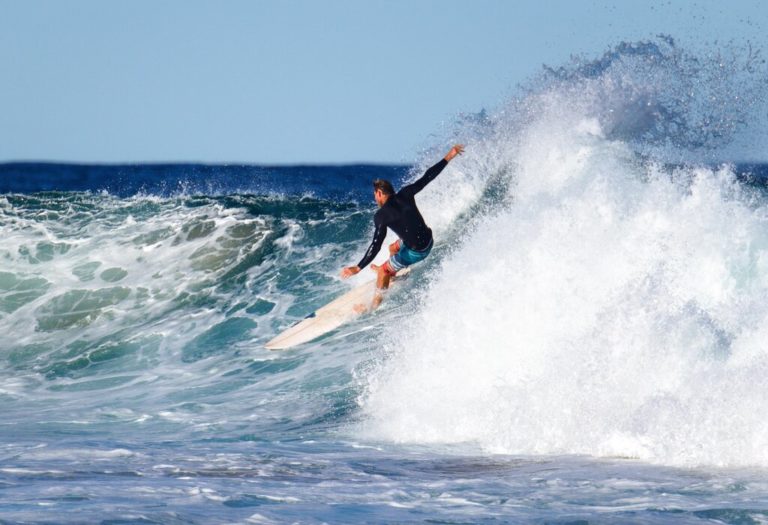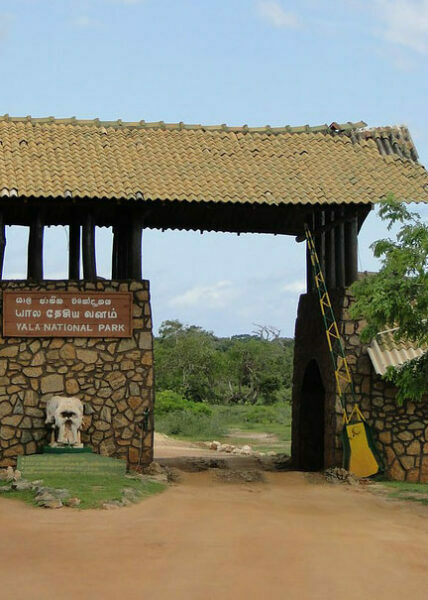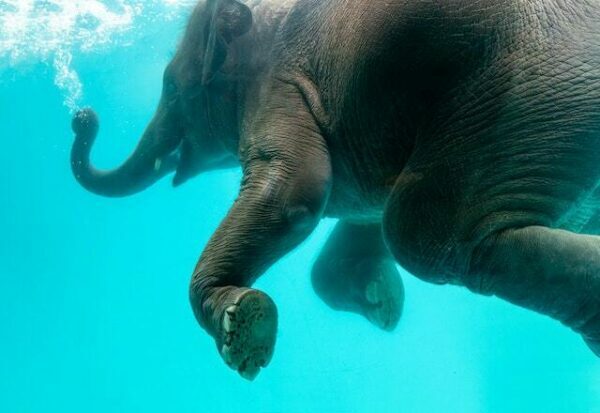Muthurajawela marsh: A Natural Wonder
Muthurajawela mash, often referred to as the “Swamp of Royal Treasure,” is an extensive marshland spanning over 7,000 hectares on the western coast of Sri Lanka. Its name aptly describes its allure, as it truly is a treasure trove of natural wonders.In 1996, the government designated 1,777 ha (4,390 acres) of the northern Muthurajawela marsh as a wetland sanctuary under the Flora and Fauna Protection Act in honor of the area’s rich biodiversity.Let’s dive deeper into the various aspects that make Muthurajawela a haven for wildlife and a paradise for nature lovers.
From its rich biodiversity to its cultural significance, the wetland sanctuary holds a special place in the hearts of locals and nature enthusiasts alike. And also as Muthurajawela is conveniently accessible from both Colombo and Katunayake, it is quite well known among visitors who remain in Sri Lanka for a short period of time or visitors arriving for a transfer.
The Flora and Fauna of Muthurajawela marsh
Rich Biodiversity in Muthurajawela
Muthurajawela boasts an astonishing variety of flora and fauna, making it one of the most biologically diverse wetlands in Sri Lanka. The marshland is home to a myriad of plant species, including mangroves, ferns, and aquatic plants. These plants form a vital ecosystem that provides a sanctuary for countless animal species.
Captivating Wildlife: Mammals, Reptiles, and Amphibians
Beyond its avian treasures, Muthurajawela is home to a diverse array of mammals, reptiles, and amphibians. Keep your eyes peeled for playful otters frolicking in the water, elusive fishing cats stealthily hunting their prey, and gentle giant water buffaloes grazing peacefully along the banks. If you’re lucky, you might even spot a mugger crocodile basking in the sun.
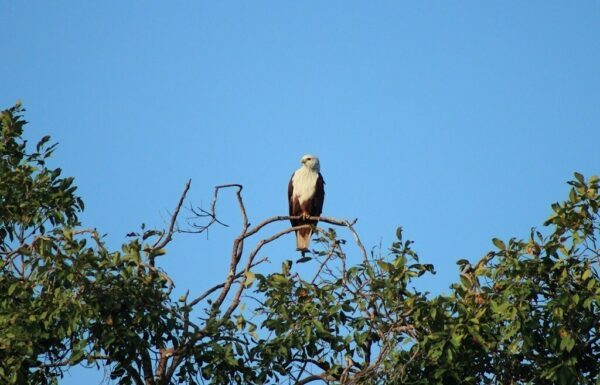
Must-Visit Attractions and Activities in Muthurajawela
As you embark on your adventure in Muthurajawela, there are several attractions and activities that will make your visit truly memorable. Let’s dive into the top highlights of this mesmerizing wetland.
Boat Safari in Muthurajawela
Embark on a boat safari and traverse the meandering waterways of the sanctuary. As your boat glides through the tranquil waters, you will witness the awe-inspiring beauty of the mangrove forests and encounter a plethora of wildlife. Keep your camera ready to capture glimpses of colorful kingfishers, elusive monitor lizards, and the occasional crocodile basking in the sun.
The boat ride typically lasts for a couple of hours, giving you ample time to soak in the tranquility of the wetland and appreciate its natural beauty. Exploring the wetland on a boat safari is not only a thrilling adventure but also an educational experience that deepens your understanding of Sri Lanka’s rich biodiversity. It is an excellent opportunity to connect with nature and witness the wonders of this unique wetland ecosystem.
Bird Watching in Muthurajawela
Birdwatching in Muthurajawela is a delightful experience for nature enthusiasts. Its diverse ecosystem provides a haven for a wide variety of bird species, making it an ideal destination for birdwatching.
The wetland is home to over 200 species of birds, including both resident and migratory species. Some of the common resident birds you may encounter include Purple Herons, Little Egrets, Indian Cormorants, White-breasted Waterhens, and Black-winged Stilts. These birds can be found year-round in Muthurajawela.
During the migratory season, which typically spans from November to March, you may have the opportunity to spot a variety of visiting birds. Muthurajawela attracts migratory species such as the Common Sandpiper, Marsh Sandpiper, Curlew Sandpiper, and several species of plovers and ducks.
To make the most of your birdwatching experience, consider visiting Muthurajawela early in the morning or late in the afternoon when bird activity is at its peak. Remember, Muthurajawela is home to numerous other bird species, so keep your binoculars handy and explore the wetland to fully appreciate its avian diversity.
Most Common Bird Species to see in Muthurajawela Wetland
1.Purple Heron (Ardea purpurea)
- This large and elegant heron can be spotted wading through the shallow waters of Muthurajawela in search of prey. Its striking plumage, with shades of purple and gray, makes it a visually captivating sight.
2. White-bellied Sea Eagle (Haliaeetus leucogaster)
- Keep an eye on the sky for the magnificent white-bellied sea eagle. With its impressive wingspan and characteristic white belly, it soars above the wetlands, often hunting for fish.
3. Stork-billed Kingfisher (Pelargopsis capensis)
- One of the most striking birds you might come across is the Stork-billed Kingfisher. Its vibrant blue and orange plumage, coupled with its large bill, make it easily recognizable. Look for it perched on branches near water bodies, patiently waiting to dive in for a meal.
4. Purple Swamphen (Porphyrio porphyrio)
- The Purple Swamphen, also known as the Purple Moorhen, is a stunning waterbird with striking blue and purple hues. You can find them navigating through the marshy vegetation or gracefully walking on floating plants.
5. Little Cormorant (Microcarbo niger)
- This small cormorant species can be observed diving into the water to catch fish. Its dark plumage, slender neck, and hooked bill distinguish it from other waterbirds in the area.
6.Black-headed Ibis (Threskiornis melanocephalus)
- Keep an eye out for the distinctive Black-headed Ibis, with its glossy black head and neck contrasting against its white plumage. They are often seen foraging in shallow water or marshy areas.
7. Common Kingfisher (Alcedo atthis)
- Known for its vibrant colors, the Common Kingfisher is a frequent visitor to the wetlands. Its electric blue and orange plumage and its remarkable fishing skills make it a delight to watch.
Most Common Tree Species to see in Muthurajawela Wetland
1.Mangroves
- Muthurajawela is known for its extensive mangrove forests, which play a crucial role in stabilizing the coastal ecosystem. Common mangrove species found here include Rhizophora mucronata (Red mangrove), Avicennia marina (Grey mangrove), and Sonneratia alba (Milkwood mangrove). These mangroves provide shelter and breeding grounds for various aquatic and bird species.
2. Palu (Manilkara hexandra)
- Palu, also known as the Ceylon Ironwood, is a prominent tree species found in Muthurajawela. It has a dense crown and can grow up to 30 meters tall. Palu trees provide habitat for birds and other wildlife and offer shade and shelter to various organisms.
3. Nipa Palm (Nypa fruticans)
- The Nipa Palm is a characteristic plant of brackish water environments. It thrives in the marshy areas of Muthurajawela and is easily recognized by its feather-like fronds. Nipa Palms are essential in preventing soil erosion and provide nesting sites for birds.
4. Water Hyacinth (Eichhornia crassipes)
- This floating aquatic plant with attractive purple flowers is often seen in the waterways of Muthurajawela. While it is an invasive species in many regions, it adds a splash of color to the wetlands and provides cover and food for certain aquatic organisms.
5.Water Lilies
- Several species of water lilies can be found in Muthurajawela, adding beauty to the tranquil water bodies. These aquatic plants, such as Nymphaea nouchali (Blue water lily) and Nymphaea stellata (Star lotus), have vibrant flowers that attract pollinators and create a picturesque sight.
6.Nelumbo nucifera (Lotus)
- In certain parts of Muthurajawela, you may spot the elegant and sacred Lotus flowers blooming on the water’s surface. These beautiful flowers hold cultural significance and symbolize purity and enlightenment.
7. Pandanus (Pandanus tectorius)
- Pandanus, also known as Screw Pine, is a distinctive plant with long, spiky leaves arranged in a spiral pattern. It is commonly found near water bodies in Muthurajawela. The plant’s fruit is used in traditional cooking and its leaves for weaving.
Most Common Mammals to See in Muthurajawela
1.Fishing Cat (Prionailurus viverrinus)
- One of the most elusive and captivating mammals found in Muthurajawela is the fishing cat (Prionailurus viverrinus). Known for its exceptional swimming skills, this medium-sized feline is a master fisherman. With its webbed feet and keen eyesight, the fishing cat elegantly hunts for fish, frogs, and crustaceans in the wetland’s shallow waters. Observing these majestic creatures in their natural habitat is an unforgettable experience.
2. Purple-faced Langur (Semnopithecus vetulus)
- The Purple-faced Langur is an Old World monkey species endemic to Sri Lanka. Their striking appearance and social behavior make them a captivating sight.
3. Indian Otter (Lutra lutra)
- The Indian Otter, also known as the Smooth-coated Otter, is a charismatic species often seen swimming playfully in the wetland’s waterways. It is a fascinating semi-aquatic mammal that inhabits the riverine landscapes of the Indian subcontinent.
4. Grey Mongoose (Herpestes edwardsii)
- The grey mongoose is a common sight in Muthurajawela. These agile and curious creatures belong to the mongoose family and play a vital role in controlling the wetland’s rodent population. While they may appear shy, patient observers will be rewarded with delightful glimpses of their playful behavior.
5. Sri Lankan Spotted Chevrotain (Moschiola meminna)
- Also known as the “mouse-deer,” the Sri Lankan spotted chevrotain is a tiny, deer-like mammal that roams the forested areas of Muthurajawela. These gentle creatures are predominantly active during dawn and dusk, adding an air of mystery to any wildlife expedition.
6. Slender Loris (Loris tardigradus)
- The slender loris is a nocturnal primate that inhabits the wetland’s lush vegetation. With their large, soulful eyes and slow movements, they capture the hearts of those lucky enough to spot them. As nocturnal animals, witnessing a slender loris in the moonlit hours is an incredibly rare and cherished encounter.
7. Toque Macaque (Macaca sinica):
- Another primate species found in Muthurajawela is the Toque Macaque. These curious and social monkeys are known for their distinctive tufted hair on their heads.
Most Common Reptiles to See in Muthurajawela
1. Mugger Crocodile (Crocodylus palustris)
- The impressive and iconic Mugger crocodile is a common sight in Muthurajawela. Basking under the warm sun near water bodies, these formidable reptiles add a touch of excitement to the marshland experience.
2. Water Monitor (Varanus salvator)
- The water monitor lizard is the largest lizard species in Sri Lanka, and it thrives in Muthurajawela’s diverse landscape. With their striking appearance and impressive size, these reptiles are a sight to behold. Spotting a water monitor lizard sunbathing on the banks of a lagoon is a cherished moment for any visitor.
3. Painted-lip Lizard (Calotes calotes)
- The Painted-lip Lizard, with its vibrant colors and distinct patterns, is a visually appealing reptile commonly found perched on branches and rocks. Its agile movements and eye-catching appearance make it a favorite among reptile enthusiasts.
4. Green Garden Lizard (Calotes calotes)
- Another species of garden lizard, the Green Garden Lizard, stands out with its striking emerald green coloration. These lizards are known for their ability to change color slightly depending on their mood and surroundings.
5. Black-lipped Lizard (Calotes nigrilabris)
- The Black-lipped Lizard is easily recognizable by its dark-colored lips and contrasting body. Their unique features make them an interesting subject for observation and study.
6. Striped Keelback Snake (Xenochrophis vittatus)
- This non-venomous snake species is commonly found near water sources, such as ponds and marshes. Feeding on small fish and amphibians, the Striped Keelback plays an essential role in maintaining the ecological balance of Muthurajawela.
7. Checkered Keelback Snake (Xenochrophis piscator)
- Another non-venomous snake found in the wetland, the Checkered Keelback Snake contributes to the ecological balance by controlling rodent populations.
Photography Expeditions
For avid photographers, Muthurajawela presents an idyllic setting to capture breathtaking moments of natural splendor. The ever-changing light, the vibrant colors of the surroundings, and the abundant wildlife make for truly captivating photographs. Whether you are an amateur or a seasoned professional, the Sanctuary will inspire you to unleash your creativity and capture nature’s essence through your lens.
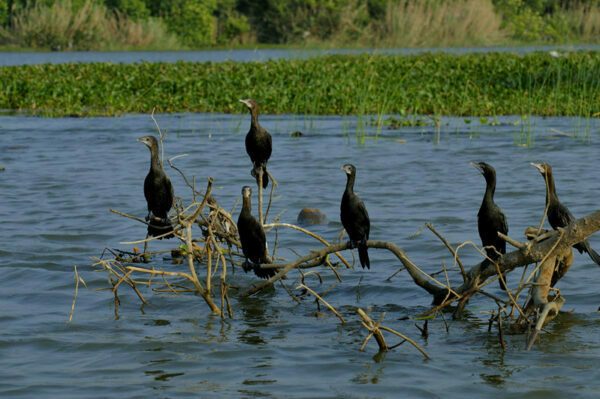
FAQs
1. What is the best time to visit Muthurajawela?
The best time to visit Muthurajawela marsh is during the dry season, which typically falls between November and April. During this period, the water levels are lower, making it easier to navigate the wetland and observe wildlife. Best time of the day to visit wetland is early in the morning or late in the evening.
2. Are there guided tours available in Muthurajawela?
Yes, guided tours are available. Local tour operators like muthurajawela boat safari offer expert guides who are knowledgeable about the flora, fauna, and cultural heritage of the area. These guided tours provide valuable insights and enhance the overall experience of exploring Muthurajawela.
3. Are there any accommodation options near Muthurajawela?
While there are no accommodations within the sanctuary itself, there are several hotels and guesthouses in the nearby city of Negombo or katunayake close to the airport. These establishments offer a range of options to suit different budgets and preferences, ensuring a comfortable stay for visitors.
4. Can I engage in recreational activities in Muthurajawela?
To ensure the preservation of the delicate ecosystem, recreational activities such as Barramundi & Sport Fishing Tours and boating are regulated in Muthurajawela. However, guided boat tours are available, allowing visitors to explore the wetland while minimizing their impact on the environment.
5. Is Muthurajawela marsh easily accessible from Colombo?
Yes, The wetland is conveniently located just a short distance away from Colombo. It takes approximately 30 minutes to reach the wetland from the city, making it easily accessible for day trips or weekend getaways.
6. Can I go on a self-guided tour in Muthurajawela?
It is recommended to join guided tours led by experienced naturalists who possess in-depth knowledge of the area. Their expertise will enhance your understanding of the ecosystem and ensure a safe and fulfilling experience.
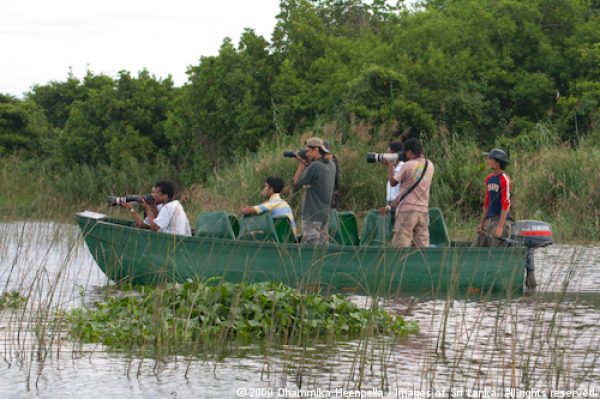
Conclusion
As we conclude our journey through the captivating world of Muthurajawela, we hope you have gained a deeper appreciation for its ecological wonders and cultural significance. This wetland sanctuary serves as a reminder of the interconnectedness of humans and nature, and the importance of preserving our natural heritage. So, when you find yourself in Sri Lanka, make sure to visit Muthurajawela and immerse yourself in the breathtaking beauty of this remarkable sanctuary.
We hope you enjoyed this blog on Muthurajawela, Sri Lanka! If you have any questions, please send us a message on our website or leave a comment below so that we can respond!
To book guided boat safari’s and bird photography tours simply contact us on Ceylon hunt, Contact Muthurajawela Boat safari or whatsapp on +94777875828

